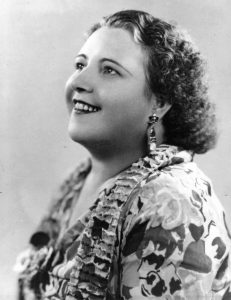Pioneers of song
All through history, music and song has accompanied humanity in its joys and sorrows. Song is also an important part of the cultural identity of a territory. Linked to its time, the songs we sing may nurture, amuse, shock or make a demand for change.
In Québec between 1930 and 1950, popular songs inspired by everyday reality created links with more traditional tunes, which until then had been essentially folkloric. La Bolduc, the first singer-songwriter in this vein, was a worthy representative of this new musical scene.
 In 1948, Québec culture was given a profound shake-up by the publication of a manifesto, Refus global. Led by a group of influential artists, it launched hostilities against the restrictive rigour of the political, economic and social elites. The moral rigidity of the Catholic church was particularly targeted.
In 1948, Québec culture was given a profound shake-up by the publication of a manifesto, Refus global. Led by a group of influential artists, it launched hostilities against the restrictive rigour of the political, economic and social elites. The moral rigidity of the Catholic church was particularly targeted.
As the 1950s was ending, a phenomenon related to the café society began to take form in Québec: “la boîte à chansons.” It was a place where nascent singer-songwriters and poets could come and perform.
The boîtes à chanson made it possible for new ideas expressed in the manifesto and other publications to spread throughout Québec via words and music. These new cultural havens created audiences for singers, and their texts and music. They were part of a new generation with something to say: youth reaching for the goals of peace and love, and freedom from the strictures of old.
One of the most famous of the Québec boîtes à chanson, the Butte à Mathieu, built by Gilles Mathieu and located on a hillside or butte in the village of Val-David, was an integral part of this journey.


